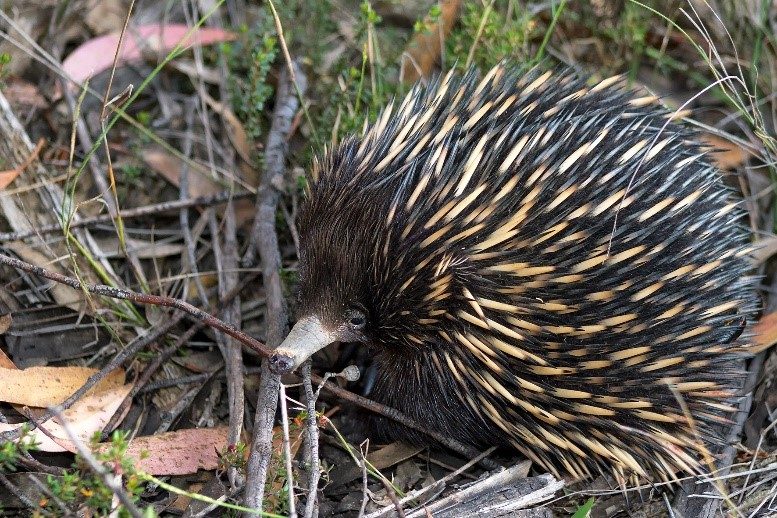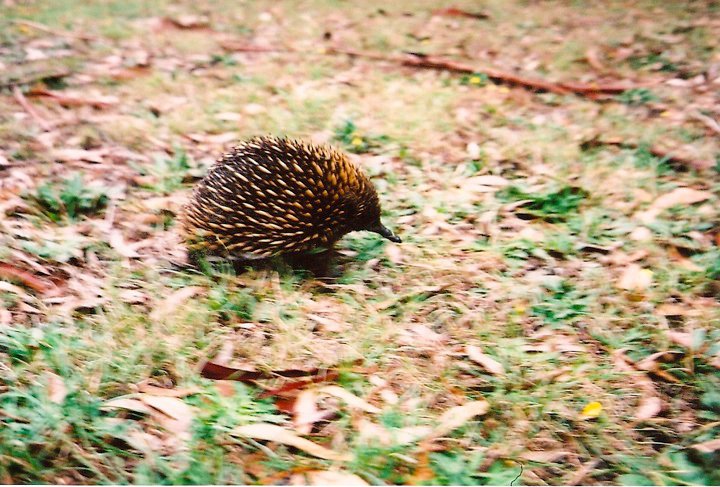
The short-beaked echidna. Image: Louise Docker
Echidnas are notoriously shy and difficult to see in the wild and even though they are one of our iconic Australian animals, we know very little about them. The team behind Echidna CSI want to change that.
Professor Frank Grützner’s research group at the School of Biological Sciences, University of Adelaide aims to identify echidna populations on mainland Australia and determine if, and why, they are under threat before taking steps to help their conservation.

Up to now, a study on mainland echidna populations was considered unfeasible due to the time and resources required to gather any meaningful field data over such a large area. Especially because echidnas are so cryptic – if you go out specifically to look for one, you’re guaranteed not to see any.
This is where the Atlas of Living Australia (ALA) can help. Using the ALA’s BioCollect as the back-end database and data management interface, University of Adelaide PhD student Alan Stenhouse developed a mobile app – Echidna CSI – for the Grützner research team. Using BioCollect saved the project team time and costs, and allows data to flow seamlessly into the ALA where it is stored, analysed and re-used. BioCollect helps the team to recruit members of the public (citizen scientists) to record echidna sightings and mail echidna scat samples to the research team, by making the project publically discoverable via the Australian citizen science project finder. This means large amounts of data can be collected across a huge area.
“We know just by speaking to the general public that echidnas are spotted quite frequently out in the wild or even in backyards, so a citizen science approach to gaining this kind of data is ideal,” said Tahlia Perry, PhD Student, University of Adelaide.
The Echidna CSI app allows people to make records wherever they are. It is easy to access and has a simple user interface. It is a good promotional hook to raise public awareness of the project and helps communication between the research team and their citizen science workforce.
Results so far
Since the launch of Echidna CSI in September 2017, over 1500 people have registered through the mobile app. Over 850 submissions (including approximately 80 scat samples) have been received from contributors across all states and territories. Several submissions are uploaded every day.

You can run, but you can’t hide (from citizen scientists)! Image: Eliza Keck
Out of the total 750 submissions, approximately 665 (78%) have been submitted on the Echidna CSI mobile app and 185 (22%) have been made directly through the BioCollect website.
ALA and Echidna CSI
“ALA is not only useful for data submission. It really helps us to look at what data is coming in. I am a very visual person, so being able to see all the data on a web interface is incredibly useful. I can view the photos that come through and verify sightings instantly. The map allows me to look at where data submissions are coming from and I can filter my data through ALA even before downloading it for analysis. This means I don’t need to be a computer scientist to visualise and understand the data coming in, which I am very grateful for.” Tahlia Perry, PhD Student, University of Adelaide.
Download the Echidna CSI app here – Android and Apple
This blog originally appeared on The Atlas of Living Australia website. Read the original article here.


17th January 2018 at 6:49 pm
Can I supply details on the computer as I do not have a mobile phone due to no mobile reception in my area?
17th January 2018 at 12:16 pm
Large one in our yard a few weeks ago, watched him climb a retaining wall twice his size to get to the ants. Looked in good condition, we are in the Mansfield district in Victoria
17th January 2018 at 9:47 am
I see echidnas around my home frequently, but I always have my dogs (on leads) with me so I cannot get close. They all seem to be healthy and in good condition
17th January 2018 at 9:31 am
Since Christmas I have seen six echidnas in Southern Tasmania. It’s a pity Tassie is not included.
Although I hope that means the population here is not under threat
16th January 2018 at 8:10 pm
Pity I can’t add into the all a photo or details of an echidna I saw a couple of days ago..